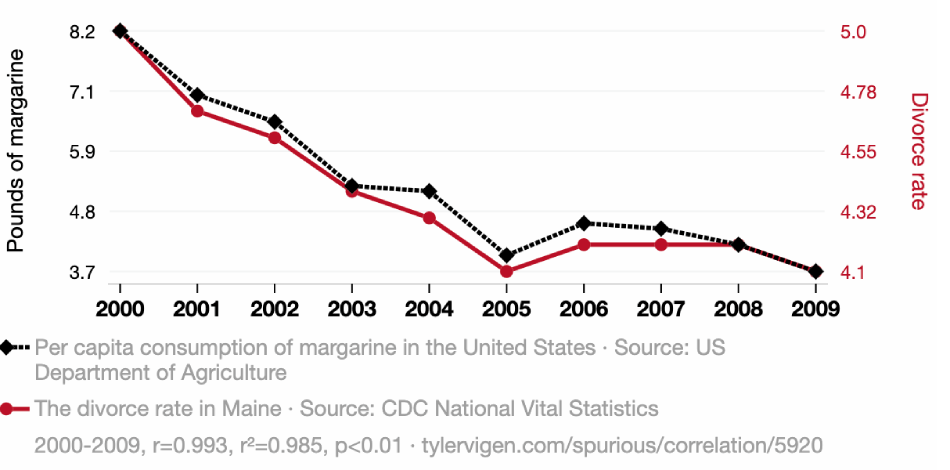The illusion of the numbers

Data of any kind can be used to prove anything if manipulated carefully enough. Numbers might seem definitive, but with some pressure—whether intentional or due to incompetence—there’s no “truth” that can’t be confirmed. A classic example is the story of a chicken, a portion of rice, and two hungry people. Once the food is eaten, statistics could claim that, on average, everyone had a full meal. But is that really the case?
This paradox can go even further. On the “Spurious Correlations” page, you can find odd connections, like the 99.26% correlation between divorce rates in Maine and margarine consumption in the U.S.

Fortunately, most reasonable people question the causal link between such phenomena. Unfortunately, these same individuals, despite their intelligence, may misinterpret the results of surveys involving themselves, such as when they are in a leadership position reviewing employee satisfaction surveys.
Creating reliable questionnaires is a science in itself.
Many factors must be considered, such as who’s answering, when, and why. The most intriguing is the “projected image” phenomenon—the impression respondents want to create, especially if it affects their well-being. This isn’t done intentionally. If the evaluation involves the one who pays them, answers may not reflect true feelings.
This doesn’t mean that attempts to gauge employee opinions are futile. Viewing employees as individuals, not just workers, is crucial for modern companies. Understanding their state can greatly enhance engagement and support development.
What needs to change?
First, adopt an approach beyond static, out-of-context surveys every six months. The dynamics of daily life greatly affect both personal and professional realms. Maybe today the coffee was insufficient, or perhaps a manager asked a question that didn’t sit well.
No matter how you phrase them, it’s impractical to answer the same 15 survey questions every day.
How can we gather meaningful data for internal evaluation?
At the end of the day, the key question is, “Do I want to be here again tomorrow?” This applies not just professionally but can drive personal change too. Even if it means ignoring the need for transformation temporarily, critical accumulation is inevitable. This may lead to decisive actions, negative attitudes, or “burnout.” This could even result in “quiet quitting,” with thoughts of simply surviving day to day.
Periodically asking, “Would you recommend a friend to a suitable position here?” This question expands the understanding of perceived security and satisfaction in the workplace. It addresses not just the work environment (unlikely someone would involve a friend in a toxic setting) but also pay levels, as people talk about pay, and a recommendation indicates satisfaction with it.
How can “yes” or “no” answers help with further actions?
For management, collecting and contextualizing data—key events, periods, and conversations—can reveal the organization’s pulse. Were sales targets realistic? Was the timeframe for product launches adequate? How did feedback meetings and pay negotiations impact? Even without specific questions, it’s straightforward to assess how these situations affected a colleague’s desire to stay.
For employees, considering whether they want to remain in the same organization motivates their behavior: either to keep adding value with their skills or to look elsewhere. They’ll make the best decision for themselves and the company.
Image: Ryoji Iwata от Unsplash

